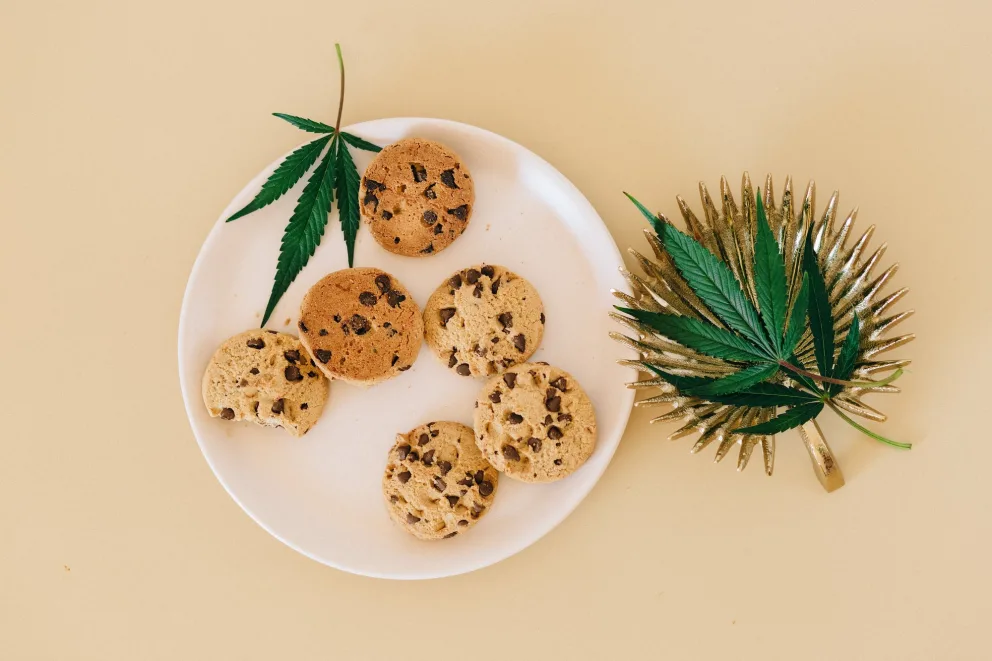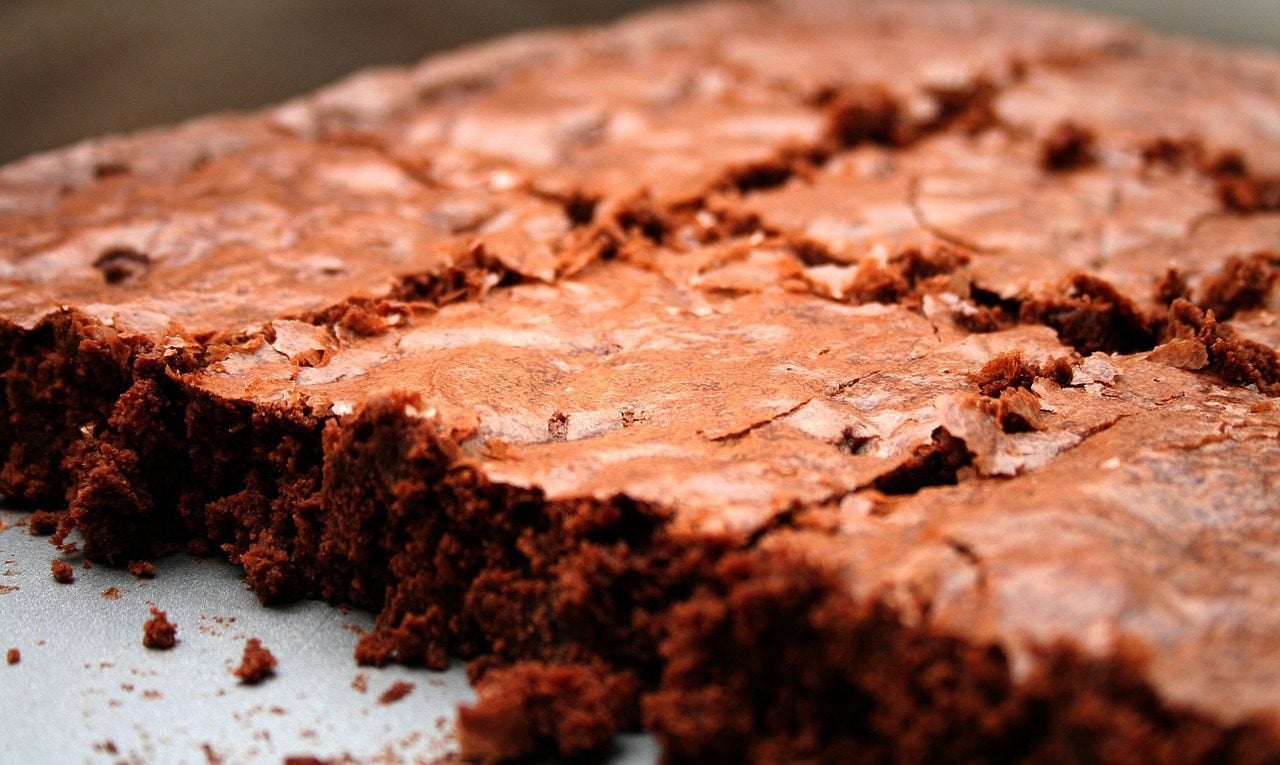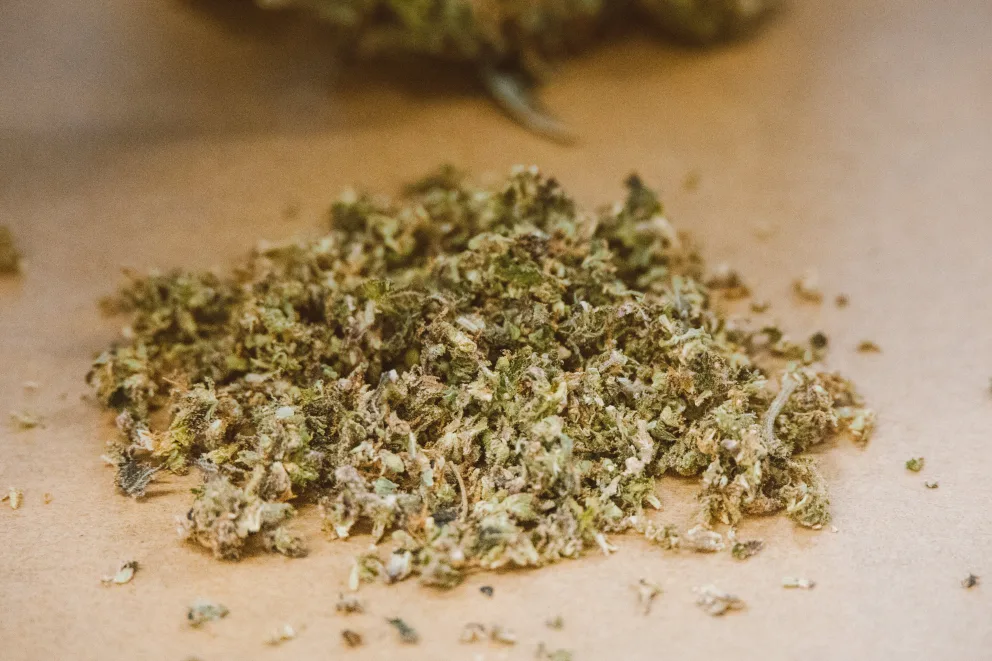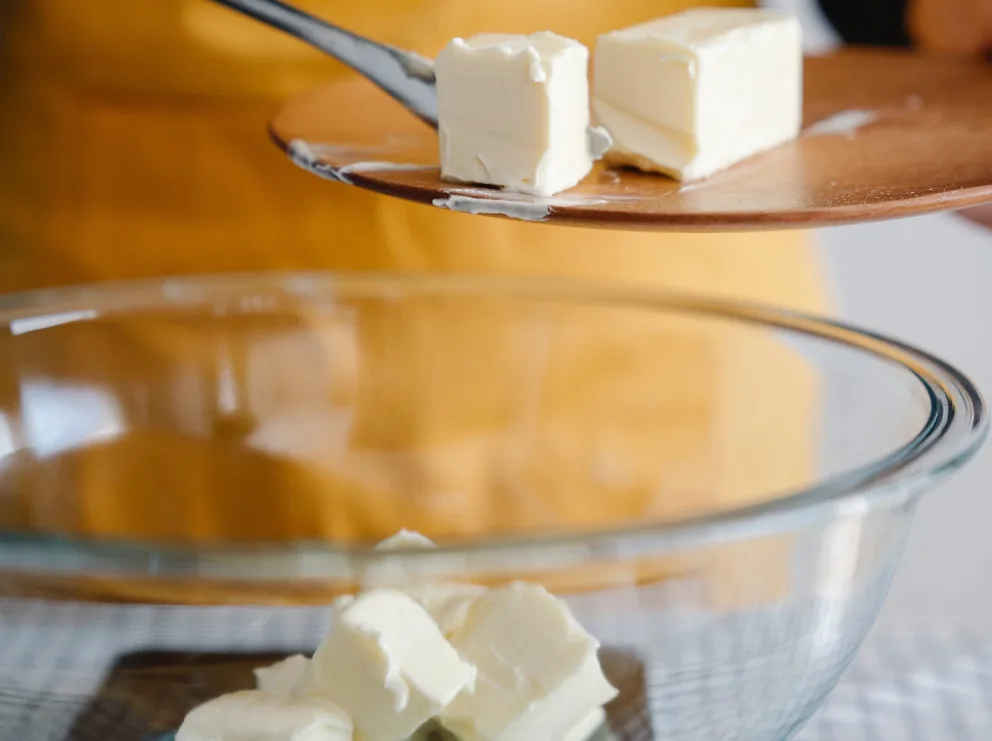
Photo by Nataliya Vaitkevich
Cooking With Cannabis Can Be Easy If You Avoid These 8 Missteps
As medical marijuana legalization expands to even the most conservative states, cooking with cannabis is becoming increasingly popular. After all, medical marijuana patients are seeking the health benefits of cannabis and sometimes the healthiest foods are the ones you make yourself.
Not to mention, edibles allow for a simple and potent marijuana delivery system without a single puff of smoke. While smoking cannabis is not as bad as tobacco it can still damage your health. Cooking with cannabis offers a healthy alternative and allows you to avoid the additives and preservatives that can find their way into even your edibles. Cannabutter or cannabis butter is one of the easiest, most versatile, and delicious ways to add cannabis to your diet.
Cannabutter is the core ingredient to many edibles and is super simple to make. Store bought edibles are great, of course. However making your own ensures you can readily control not just the flavor but the dosage of THC and other cannabinoids and what ingredients you use.
If you are new to cooking with cannabis, the first step is creating a fat-based delivery system. The valuable compounds in cannabis including cannabinoids, like THC and CBD, and terpenes which have just as many health benefits, are all fat soluble.
This means they dissolve in fat the way many products and medicines dissolve in water. The fat helps them travel throughout your body. When you cook with cannabis these compounds bind to the fats and as your body digests and metabolizes those fats these compounds can readily enter your bloodstream.
Cannabutter is the easiest and the most versatile cannabis delivery fat. Not to mention, how many of your favorite recipes call for butter? If you use cannabis butter as a foundation for your favorite baked goods and other recipes, there’s no limit to the intoxicating and delicious recipes you can make.
This post will not just provide you with the best cannabis butter recipe I’ve found but also some simple mistakes to avoid when cooking with cannabis. One important part of getting started is to acquire fresh cannabis flower.
The best place to get quality cannabis products is from medical marijuana dispensaries. If you’re planning on cooking with cannabis to treat a medical condition, you’ll want cannabis that’s been tested and grown without harmful pesticides that could exacerbate any health issues. Not to mention dodging moldy weed.
Your Medical Marijuana Card which will allow you to purchase high quality cannabis legally. To get your medical card legally try getting help from Green Health Docs.
Before you start cooking with cannabis, let’s cover some common cooking mistakes so you don’t waste perfectly good flower on a kitchen disaster.
[fl_builder_insert_layout id=13138]
Top 8 Mistakes to Avoid When Cooking with Cannabis
1. Not Decarboxylating the Cannabis
The Problem: You can’t cook edibles with raw loose cannabis. Not only will it taste terrible, but it has no active THC. That means it will not get you high. Raw cannabis contains acid forms of all of your favorite cannabinoids like THC, CBD, and CBN.
Those acids require heat to be converted into bioavailable cannabinoids. If not, you could likely just eat a gnarly tasting brownie and wonder why you aren’t getting high.
Decarboxylation is the process of converting these acids into a form your body can use. Some cannabis cooks skip decarboxylation before making butter because the infusion process automatically heats and activates cannabis—to an extent.
If you want to get the maximum THC extraction, though, not to mention maximum potency, you should always decarboxylate before cooking your oil or fat infusion.
The Solution: There are multiple ways to decarboxylate your cannabis prior to cooking. For the best results, grind up your THC (be sure to keep in mind mistake #2) over a cooking sheet and roast it in the oven for 20-40 minutes at 110 to 120 degrees. (for more see mistake #3)
Photo by Jess Loiterton
2. Over-Grinding
The Problem: A quality hand grinder makes it easy to break down your bud before cooking. This is an essential part of the cooking process because the more surface area the faster it will decarb and the more it will get heated.
However, some people go a bit overboard with the grinding. Newbies may think that there’s pulverized cannabis flower or powder in edibles but most store bought edibles have removed most, if not all, of the plant matter before even cooking.
Contrary to popular myth, grinding your cannabis into powder will not increase the amount of THC or improve your high. It just means that more of the plant material gets into your recipe, giving it a much more bitter taste. It also means that it’s getting heated more evenly which can be problematic. See mistake #3.
You will want an even grind to ensure you don’t end up with uneven decarboxylation which can result in some THC burning off into CBN which will make you tired or too much THC-A meaning a weaker high.
The Solution: When using your hand grinder to break up your cannabis, be mindful of the consistency. You want the finished product to look similar to dried oregano, not powder. Those hairs and stems contain a lot of the THC, so you want to preserve them as much as possible.
You can also just pull it apart because again, the goal is not to burn the cannabis like in a joint. The goal is to have it heat to a level for that THC-A to become THC. So you may even want to skip the grinder. Here’s why…
3. Over Cooking Your Cannabis
The Problem: Many want to milk their cannabis of as much of its THC as possible. Of course you want to be thorough. However, many don’t know what happens when you overheat THC.
When you overgrind your cannabis you can expose too much of it to heat. If you heat it too much you risk cooking the THC.
Part of what makes edibles go bad, outside of obvious food spoilage, is exposure to light, oxygen and heat can degrade THC. This converts THC or THC-A to CBN and CBN-A. CBN is a similar cannabinoid but it is not as psychoactive. It’s also more likely to make you tired than high.
If you’ve ever made brownies and overcooked your cannabis you can end up with a platter of brownies that will knock you right out.
The Solution: The key to successful decarboxylation is uniformity and low and slow cooking. While THC-A will convert into THC at 230 degrees that doesn’t mean to heat at that level. This can mean that you’re burning off valuable THC and other compounds.
Also, keep in mind if you plan to cook with your final product you may want to factor in that that heating time might cook off some of the THC in your final product. No need to worry, edibles are often more potent than you think.
4. Using Too Much Cannabis When Cooking With Marijuana
The Problem: Sometimes your eyes are bigger than your stomach. The same can be made for eager edible makers who end up using too much medical cannabis in their recipes. Proper dosages are vital to avoid getting too strong of a high.
Just because you’re used to smoking a certain strain or volume of cannabis doesn’t mean that you can comfortably eat the same amount. Edibles are digested and the cannabis gets processed differently by your body.
Not to mention your edible high can take more time to ramp up, and while it is near impossible to overdose on marijuana, you can get too high. Too much of it can definitely cause you to have a bad experience and even potentially cause cannabis psychosis.
There’s no need to worry, just don’t overdo it. Marijuana edibles have a completely different delivery system. When you smoke weed the THC is absorbed through the respiratory system into the bloodstream and metabolized.
With edibles your body can begin absorbing THC throughout the digestion process, from when you’re chewing to intestinal lymphatic transport, which means that your body can even absorb THC and cannabinoids in your large intestine.
Digestion means it takes longer to work but has a much more potent effect. Also, even seasoned stoners may be thrown by how edibles affect them because when these cannabinoids are digested they’re converted to 11-hydroxy-THC which can affect you differently.
The Solution: Finding the right concentration takes practice. For starters, think conservatively. Less is more especially if you’re going to take the time to get as much THC as possible.
When cooking cannabis butter, start by mixing ¼ oz. bud with a pound of butter. Use cannabis with about 15% THC (see the full recipe below).
Before mixing the butter into any other recipes, taste test it for potency. Once you know firsthand how strong it is, you’ll have a better idea of how liberal or conservative to be with the butter.
5. Infusing Cannabutter Without Water
The Problem: When cooking cannabis butter, some people just mix the butter with the marijuana and don’t add water to the saucepan. That’s fair, it’s not intuitive to think to add water. But again, precise heating is valuable.
While it is possible to get a quality infusion without water, it’s not a good idea to try because you risk overcooking your cannabis.
While adding water to butter may sound gross, water keeps the temperature down and helps prevent the butter from burning. Burnt cannabis butter tastes terrible and has no potency since THC starts to degrade at around 250 degrees Fahrenheit (121 degrees Celsius).
Water will also wash out any unwanted green coloration and prevents the product from having too herbal of a flavor.
The Solution: When cooking cannabis butter, maintain at least a 50:50 ratio of water to butter. An even better ratio is 60:40. If you notice that the water evaporates during cooking, or the temperature of the butter may be reaching too close to 250 degrees Fahrenheit. Be sure to add a bit more water to the infusion.
Photo by Tabita Princesia on Unsplash
6. Limiting Your Marijuana Cooking to Baked Goods
The Problem: When you mention homemade marijuana edibles, people immediately think of brownies. Sure these are excellent—and easy—products to make, but there’s a whole world of edible opportunities outside of baked goods.
In fact, the herbal nature of cannabis lends itself to more savory and spicy dishes including chili, roasted potatoes, and even chimichurri.
The Solution: Research cannabis recipes online. Thanks to growing cannabis legalization, more people are sharing their secrets to edible cooking. You can also check out the growing number of cannabis cookbooks on the market.
If you’re already making your own cannabis butter, look for ways to incorporate it into existing recipes. When deciding how much of the butter to use, follow the serving ratios outlined in #3 above.
7. Spending Too Much Money on Weed for Edibles
The Problem: You want to make a quality edible so you think buying high end weed is the answer. However, with edibles it’s all about the cannabis concentrate you end up making. Sure, high quality cannabis is great, however, it’s often designed for smoking.
High quality flower doesn’t always translate to high quality edibles. The quality of the edible is often in how well you’ve decarboxylated your weed, how much THC and other cannabinoids or terpenes you’ve distilled, and how it tastes. The value is not in the cannabis but in the processes to make the edible.
You can even use shake, the leftovers from cannabis clipping or the castoffs from grinders because not only is there vital THC and other cannabinoids in the stems we discard they are also less likely to burn as quickly as leaves allowing for a greater distillation of THC without a burnt flavor.
The Solution: Put your money into high quality food ingredients or tools. In addition to cannabutter you can use canna oil, rosin and hash to cook with. Investing in the tools to make those can be a more solid investment.
Also, using high quality butter or other edible ingredients can add to the inherent value of your edible. With edibles, it’s not about the value of the core ingredient of cannabis but in the processes used to make it and the time and effort you put into each step. You also may want to invest in a cheese cloth for mistake 8.
8. Not Straining Out the Plant Matter
The Problem: People can often think that including the plant matter can guarantee a greater high. This is a misnomer, if you’ve effectively cooked your cannabis you can ensure that you have the proper amount of THC in your final recipe.
Additionally, this plant matter can add a funky flavor which will totally kill the ultimate value of the final product. Remember, THC is fat soluble so a proper infusion should get all of the vital cannabinoids and terpenes out of the plant matter.
Not to mention, the plant matter by the time you’re done may be devoid of cannabinoids.
The Solution: Strain your final product through a cheesecloth or sieve to remove all those pesky rogue bits of weed. If you’ve followed instructions you’re likely to have a great recipe that can also taste good. Not straining can mean a stronger flavor with no guarantee of any real effect on the high.
Photo by Felicity Tai
The Perfect Cannabutter Recipe
Cannabutter (cannabis butter) is the original and the most versatile cannabis recipe. If you use it as a foundation for your baked goods and other recipes, there’s no limit to the kinds of dishes you can whip up.
This is the only foolproof cannabis recipe you’ll need, with instructions that account for the most common cooking mistakes. Just follow the steps below, and you’ll have the perfect infusion in just a few hours.
Cannabutter Ingredients
- 1lb of unsalted butter
- ¼ oz cannabis flower
- Water
Cannabutter Recipe
- Loosely grind the cannabis flowers with a hand grinder. Don’t grind them into a powder; the ground cannabis should be slightly leafy. If you’re too concerned you can break up the flower into an even mixture.
- Decarboxylate your ground cannabis. Place the flowers on a baking sheet and bake at a temperature of 120 degrees Fahrenheit for 1 hour.
- Melt the butter in a medium-sized saucepan. Add 2 cups of water and mix. Let the butter simmer over medium heat.
- Add the cannabis as soon as the butter starts to melt. Reduce to low heat and mix the ingredients well.
- Let the ingredients cook for 2 to 3 hours. Stir occasionally, and try to maintain an even temperature. If the butter nears the maximum temperature, add a bit more water to prevent the butter from scorching. When the butter appears thick and glossy, you can stop cooking.
- Place a sieve lined with cheesecloth over a large glass bowl. Pour the butter over the sieve and wait for it to filter into the bowl. This should take 5 to 10 minutes
- Cover the bowl and refrigerate overnight.
- Drain any remaining liquid and pat the hardened butter with paper towels to absorb any excess moisture.
- Refrigerate your butter in an airtight container.
- Add to your favorite recipes. Keep in mind that dosages can vary and that even mixing is key.
Mixing Your Cannabutter Into Other Recipes
Now that you have your cannabutter ready to go, here’s a trick for figuring out the right dosage. To find the optimal amount of cannabutter to use in your other recipes, start with a taste test.
- Taste one teaspoon of your batch and gauge the effect it has on you. Wait 45 minutes, as edible marijuana enters the bloodstream slowly. You’re not going to feel anything immediately.
- If the infusion isn’t potent enough for your liking, wait a few hours and raise the dosage to one-and-a-half teaspoons. Then two. When you find the ratio that provides the desired effect, consider that to be one serving.
- Add the butter to your recipes according to that desired ratio. So if you decide that one teaspoon is the perfect ratio and you want to make a batch of brownies with 12 servings, just use 12 teaspoons of the infusion in your brownie batter.
- Be sure to thoroughly mix your final mixture. If you’re cooking a savory dish, try frequent stirring. Your goal should be an even dispersal of the butter.
- Don’t be afraid to use non-weed butter. If you have an edible that makes someone too high that might be way worse than having everyone have a tempered high. Don’t be afraid to add regular butter to not only help balance out the THC but also the flavor of your dish.
The Key to Perfect Cannabis Recipes
If you’re still new to cooking with marijuana, the key is consistency. With practice, you’ll perfect your ratios and discover the best uses for your butter. Don’t be discouraged if your first few batches end up being too potent, not potent enough, or oddly flavored. As with any recipe, perfection comes with time.
When you’re first starting out, try making a new batch at least once a month, especially if previous batches don’t live up to your expectations. Within three or four months, you should feel confident in your ability to create a premium product.
Be sure to note the specific cannabis strains, cooking times, and cooking temperatures, as even subtle variables can impact the flavor and potency. Not to mention, the terpene breakdown of some strains can not just impact the flavor but how they affect you.
The good news about cooking with cannabis is that you really only need to perfect one recipe. Once you have it down to a science, the fun part is incorporating it into different delicacies.
And don’t forget if you’re planning on cooking with cannabis to treat a medical condition, you will want to get your cannabis directly from a dispensary. It’s quick and easy to get your medical marijuana card with Green Health Docs.



Leave a Reply